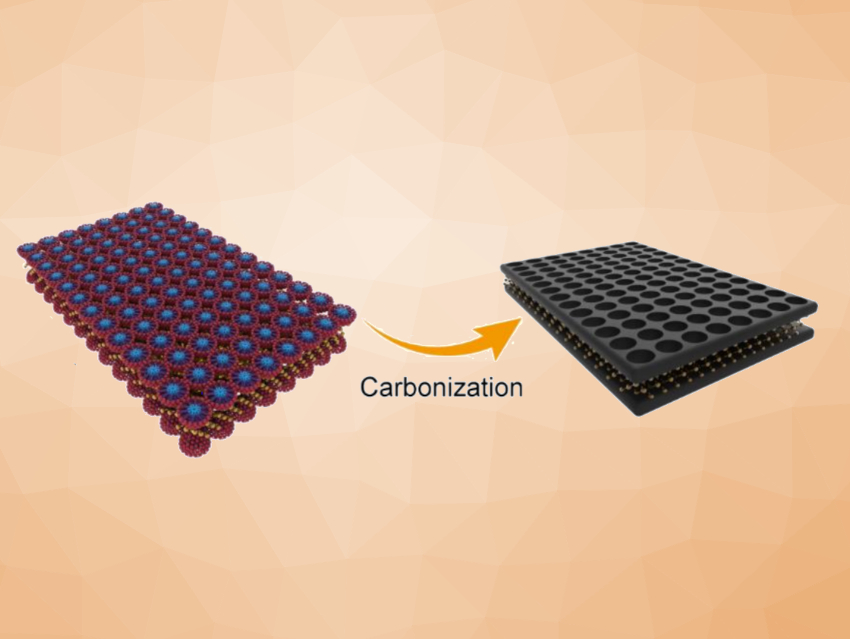Two-dimensional transition-metal carbonitrides (MXenes), such as Ti3C2Tx, could be useful electrode materials, especially for supercapacitors. However, a tendency to aggregate and the easy oxidation of MXene nanosheets limit their electrochemical performance.
Zhen-An Qiao, Jilin University, China, and colleagues have developed a self-assembly strategy to synthesize ordered mesoporous carbon/Ti3C2Tx heterostructures (OMCTs, pictured below). In this method, the surfactant Pluronic F127 is used together with low-molecular-weight phenolic resol to form stable micelles (pictured in blue and red). The hydroxy groups of the micelles can interact with the surface functional groups of Ti3C2Tx by hydrogen bonding and prevent the aggregation of Ti3C2Tx nanosheets, as well as their oxidation. A subsequent carbonization creates ordered mesoporous carbon layers (pictured in black) around the MXene nanosheets (pictured in yellow) and gives the desired OMCT heterostructures.

The resulting OMCTs have ordered mesoporous structures with high surface areas and large pore volumes. OMCTs serving as electrode materials for supercapacitors showed good performance, with a high capacitance of 247 F g–1 at 0.2 A g–1, a satisfactory rate performance of 190 F g–1 at 5 A g–1, and excellent cyclability.
- Interface‐induced Self‐assembly Strategy Toward Two‐dimensional Ordered Mesoporous Carbon/MXene Heterostructures for High Performance Supercapacitors,
Zhilin Liu, Hailong Xiong, Yaxiao Luo, Liangliang Zhang, Kuo Hu, Ling Zhang, Yu Gao, Zhen-An Qiao,
ChemSusChem 2021.
https://doi.org/10.1002/cssc.202101374



